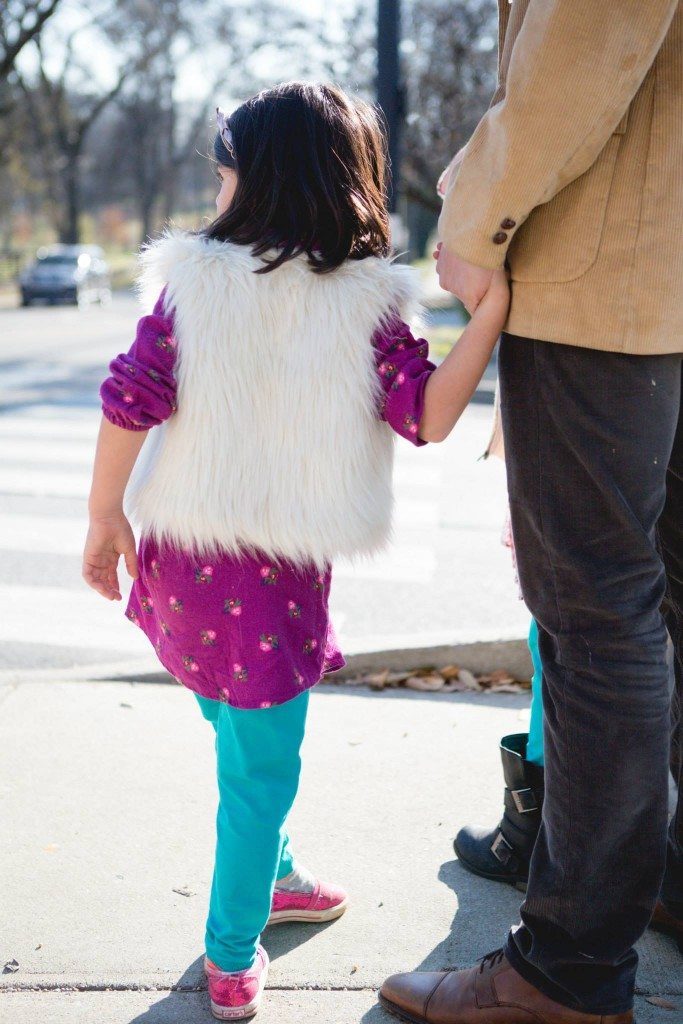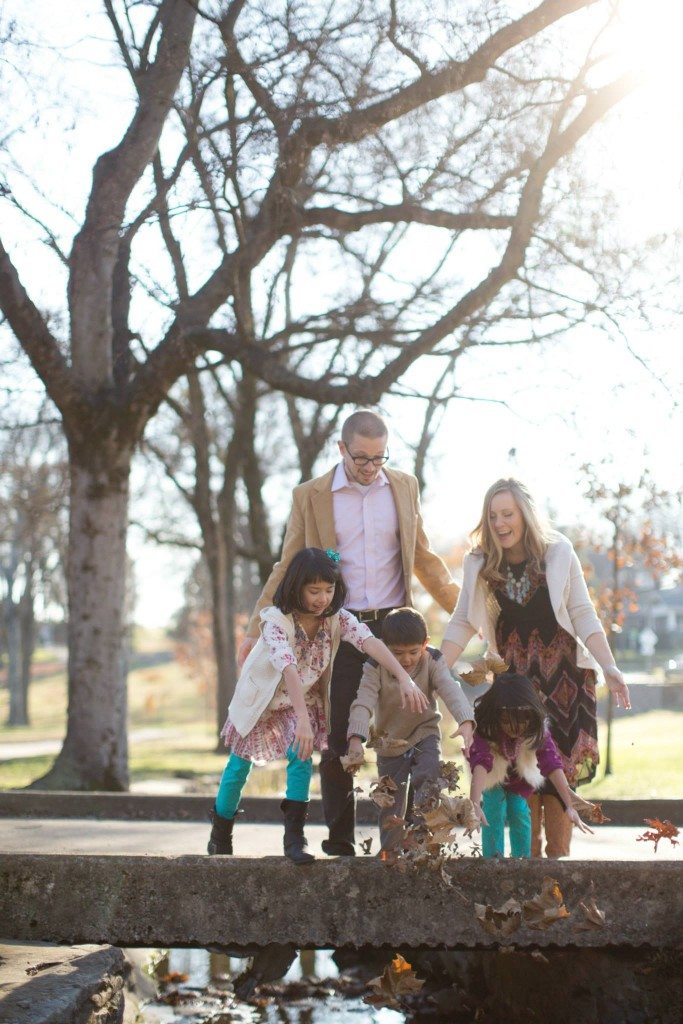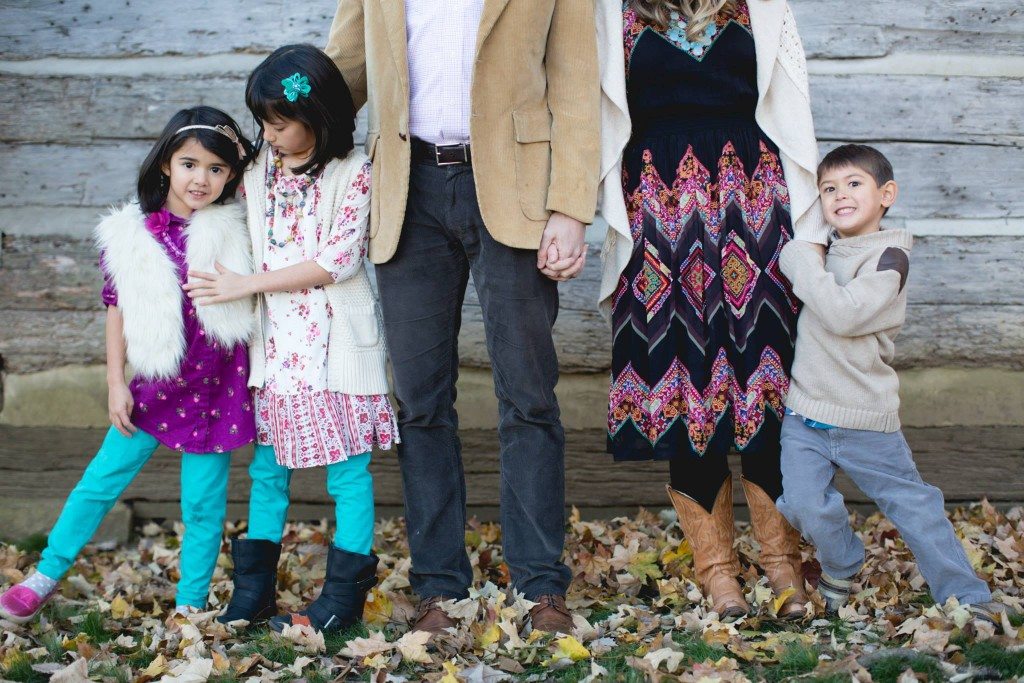Eryn shared with us last week in her post, The Burden of Expectations, that we all have expectations that we carry into our adoptions, and how these expectations can lead to significant parenting mistakes in we don’t recognize them. Today Eryn follows up her original post with five practical suggestions on how to get out from under these expectations.
So what are some practical things we can do?
1. Lower the bar. This is lowering our expectations of our children’s behavior. The main goal for the first couple months is to think of your attachment to your child (no matter their age) like you would attach with an infant. You are the main regulator of their behavior. This can be counter-intuitive because we expect a 6 year old to regulate like a 6 year old! However, in the first few months, our children need grace to regulate like an infant. If you think about how an infant gets his needs met or handles something he doesn’t like you can easily picture the baby’s reaction. A simple tool I would use in the first months was asking myself, “Is this the behavior an infant would use in this situation?” The answer was usually, “yes”. So then the burden of expectation was lifted, and we worked through it with me helping them and calming them myself. This can be done at an age appropriate level with children up through adulthood.
This might seem strange but it is the natural, biological way attachment develops. We have to have the “infant stage” of attachment where we help them regulate, calming them ourselves, in order for them to learn how to trust. Once the foundation for trust is laid, we can steadily build from there slowly raising our expectations for them and how they bond with us. It’s like a house. The foundation is Trust and no building can exist without a solid foundation. Well, it can, but it quickly has problems and eventually crumbles! Attachment cannot be built without Trust.
2. Focus your behavioral interventions on calming and supporting your children. Think more “how” versus trying to correct the “what” they might be doing. For example, it’s very much OK for a child to not want to be held right when they come home. Once we get past that expectation of reciprocal affection, we can let them know that it’s both normal for them to not want the holding and that adults can be scary sometimes. You can also show them that you, the parent, are different by giving them space.
Guiding them through the “how” of asking for that space is also important. You can actually foster attachment by guiding your child through the process of asking you NOT to hug them! That is the beauty of lowering our expectations. We don’t have to try to hold them to unrealistic expectations for behaviors they don’t have the skills for yet, but we can help them with how they communicate.
3. Take advantage of opportunities to show them that we “see” them, even when they don’t seem to notice. This goes well with another practical help: think of creative ways to say, “yes”. For example, if your child asks to go outside and it’s storming, we might have to say “not right now”. This can be viewed as a “no” and a rejection of sorts and send our children into a fearful place where their behavior may seem intense. If we come near and comfort them with saying things like, “You seem frustrated by not getting to do that. I’m so sorry that it’s raining.” This helps our child know that we see them and empathize with them. At the same time, it’s important for us to get creative with our “yeses”. After helping them calm is might be a good time to let them pick something you can play together inside. This would be a way to give them a “yes”.
4. Don’t forget you can always choose to go play in the rain. Which brings us to another important rule. When in doubt, try being silly! Playful interaction with our children has a powerful impact on engaging all parts of their brains and de-activating the stress response, thus promoting healthy attachment. One thing I try to do when I’m getting frustrated and nearing the end of my rope is to make a silly face and noise (picture cartoon character like movements). This both helps me vent my stress a bit, but also usually makes my kids think I am hilarious. It’s easy to move forward if everyone is laughing!
5. Finally, the MOST important one: Give yourself GRACE and TIME! We also have expectations for ourselves as parents. We feel like we should know what to do in any situation. I try to never use the word “should” with my husband or myself. If you catch yourself saying this, try and ponder what expectation is holding you hostage in that moment. I mentioned being smitten with my daughter, but that process took time. These days it’s hard to imagine not ever loving her! Sometimes we just sit in bed a night and talk about how awesome our children are because we are so in love with them, but again, this takes time. Give yourself plenty Grace and plenty of Time.
A Note on Resources: My turning point was attending an Empowered to Connect conference where some things really began to click into place and I knew I had been wrong about some of my expectations for both my children and myself. I strongly recommend these conferences and the materials on Trust Based Relational Interventions® provided by Texas Christian’s Institute of Child Development. The DVDs that TCU puts out about TBRI® are invaluable resources for parents both waiting for their children and current adoptive parents.
The first one I usually ask parents to watch is called Attachment: Why It Matters. Waiting parents, you will benefit greatly from watching these and preparing ahead of time.
Eryn has experience doing a little of everything from professional baking, to catering weddings, to professionally counseling anyone from trauma. After adopting her sweet, challenging, rambunctious, awesome three, she needed a place for post-adoption support. So she started a non-profit where other parents could come and get much needed services. Eryn serves as Community Educator, training parents and others on successful ways to connect with kids from hard places.
Eryn’s love language is problem solving and she enjoys being a resource for parents who have adopted or have chosen to foster. She blogs at Pumpkin’s Pantry, where she posts on everything from the hard stuff of adoption to gluten-free recipes.




























Leave a Reply